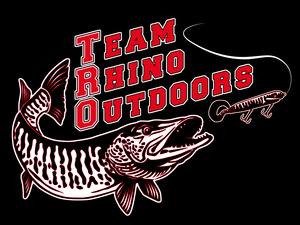Phil Schweik talks on and off the water tips
We asked Phil Schweik with Hooksetters Guide Service (1) What is something you do off the water to help catch more fish? and (2) When your on the water and not contacting muskies what is 1 change you'll make. Below you'll the answers to these questions.
#1 I work with several other tournament anglers and the guides that are on our Hooksetters staff and we share information as to what is working and what is not working to help each other become more successful when we are on the water. We share information as to what lures or baits are working, locations where we are catching fish, water temperature, current flow rate, water level, and other different conditions that are pertinent to us catching fish. I also read a lot. 😄
#2. My first adjustment if I am not catching fish is changing locations . I'm a firm believer in the fact that the fish are always biting somewhere, you just have to find them. Secondly would be changing my presentation
6 Guides way in on 2 questions about catching muskies
Musky season is in full swing and hopefully you’ve been having a successful year. When we put out a newsletter we try to give you something to help you become a better musky angler. In this issue we asked six musky guides 2 questions.
- What is something you do off the water to have success on the water?
- If your not contacting fish what is one adjustment you make?
With six guides you can bet we got a few different answers. If you visit the blog section of our website we will put the whole response from some of the guides we talked with. The six guides were Steve Genson with Genson’s Fish Hunts, Phil Schweik with Hooksetters Guide Service, Kevin Pischke with Lay in a Line Service, Gregg Thomas with Battle The Beast Guide Service, Jeff Van Remortel with WDH Guide Service, and Pete Rich with Pete Rich Guide Service.
When asked “What is something you do off the water to have success on the water” many of them agreed that making sure your tackle is organized, including keeping hooks sharp was a top priority. Gregg Thomas said that he spends lots of time playing with weighting of baits when he’s not in the boat. Adding weight to crankbaits and jerkbaits can help get baits deeper to fish that haven’t seen them before. Captain Kevin Pischke likes to keep detailed catch logs and use them to help develop patterns over the course of the season. Kevin said if you keep good records you can go one step further and compare fish location based on seasons where you’ve seen similar weather develop. Phil Schweik spends a good amount of time reading in addition to talking with a network of guys about water temperature, current flow, and water level so when he hits the water he has a well thought out plan. Based on the information we gathered from these guys they all made it seem that time spent preparing for a musky hunt off the water can definitely influence their success.
So now the question that most people want to know, “When your not contacting fish what is one adjustment you make”? Pete Rich said that if he’s on a good bite that suddenly isn’t producing he will make a move in if he had been fishing open water and will make some trolling passes closer to open water if he’d been casting shoreline structure. His thought is that the muskies won’t abandon the area they’ve been in overnight. Those fish will just slide in or out based on conditions. Steve Genson will take a 2-fold approach. His first change is lure style. If he’s been throwing blades and not seeing fish, he would then make a change to a top water bait or glide bait. Once he contacts a fish it’s now a matter of what TRO custom color will trigger those fish. Gregg Thomas has a similar approach to Pete when working a “Good Area”. Making a depth change is his first move. If Gregg runs into a heat wave or prolonged periods of high pressure he will move a cast length off structure. If a cold front blows in or shade is created by the sun, Gregg will move shallower to take advantage of the drop in water temperature. Guide Jeff Van Remortel will take change to a whole new level. Jeff runs his guide business in Northern WI and moving to different water or lake type that might be “on” is well within reason. When Phil Schweik is on the water he knows the fish are biting somewhere, so his first move is to change locations and “run and gun” until he finds active fish. His second move is to change up presentation type and either slow down or speed up depending on what he had been previously doing. Kevin Pischke makes a similar change to Gregg and Pete and usually analyzes boat position. If he’s working a spot he knows has produced he will slide in or out first. Sometimes he will also flip and throw shallow to deep to retrieve baits in a manner they haven’t seen recently.
Clearly we’ve seen some similarities and differences among the 6 guides. Hopefully you’ve read something you can do when you’re on and off the water to help put more muskies in the net this late summer/fall period. Good Luck with the chase.
Visit us at www.teamrhinooutdoors.com
